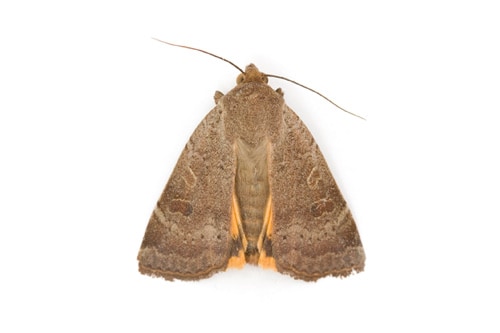
The commonest of the so-called clothes moths, with characteristic golden-bronze wings, flecked with black, folded flat along its back. The adult is about 8mm long and prefers to run rather than fly.
They grow up to 18mm long, feeding on wool, hair, fur, feathers, cork or debris from food such as dried fruit or cereals, and are common scavengers in old birds’ nests, from which they may enter buildings.
The related White Shouldered House Moth has mottled wings with a white head and “shoulders” where the wings join the body. Eggs are attached to fabric on which grubs will feed. The larvae are creamy-white caterpillars with brown heads.
The caterpillars spin silken cocoons in which they pupate. The life cycle takes several months to complete. Only the larval stage feeds, as a general scavenger as well as a textile pest.

Man-made fibres have reduced the house moth problem, but sensible precautions include scrupulous cleaning of all woollens and storing them and furs in sealed polyethene bags or closely wrapped in paper in tightly closed drawers or cupboards – preferably in a cool room.
Fold in a disc of moth repellent. Hang moth repellents in wardrobes. Before putting clothes in storage, spray them with an aerosol moth-proofer. Modern moth repellents do not all smell of naphthalene.
Clear out old birds’ nests or pieces of fabric from the loft.
Clean carpets regularly paying special attention to the edges. Spray any affected garments, fabrics, wool or carpets with a proprietary aerosol moth-proofer, especially along seams, folds and into any gaps in floors or shelves where fluff collects. Spray the underfelt (not rubberised underlays) and the carpet backing. Upholstery can be sprayed with moth-proofer or it can be fumigated by a suitably qualified contractor.